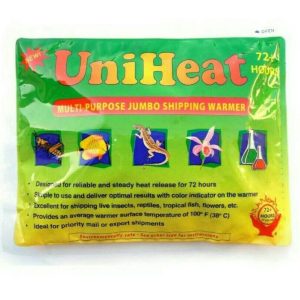Heat packs are essential for safe winter plant shipping. Learn how they work, why they’re crucial, and practical tips to protect your plants during cold weather.

As winter’s chill sets in, the need to ensure the safe transportation of plants becomes a critical concern for plant enthusiasts and businesses alike. For instance, studies show that up to 30% of plants shipped during winter can suffer damage due to freezing temperatures if not adequately protected. Whether you are sending a gift, fulfilling an online order, or simply moving plants to a new location, low temperatures can wreak havoc on delicate greenery. Heat packs are a game-changer in maintaining the health and vitality of plants during transport in cold weather. Let’s delve into why they are essential and how to use them effectively.
Why Protecting Plants in Winter is Crucial

Cold temperatures can be devastating for plants, especially tropical or sensitive species. Exposure to freezing conditions may lead to:
- Cell damage: Ice crystals can form inside plant cells, causing them to burst.
- Root damage: Prolonged exposure to cold affects root systems, reducing their ability to absorb nutrients and water.
- Increased susceptibility to pests and diseases: Cold stress weakens plants, making them more vulnerable to infections.
To mitigate these risks, it is vital to maintain a stable temperature around plants during transit, and this is where heat packs come into play.
What Are Heat Packs and How Do They Work?
Heat packs are simple yet effective devices designed to generate warmth during transit. They typically consist of natural materials like powdered iron, activated carbon, and vermiculite. When exposed to air, these materials undergo an exothermic reaction, releasing heat steadily over several hours.
Key Features of Heat Packs:
- Long-lasting warmth: Heat packs are available in various durations, ranging from 24 to 96 hours.
- Compact design: Their lightweight and space-saving design makes them ideal for packaging.
- Safe for plants: Designed to emit consistent warmth without overheating or causing damage.
The Importance of Maintaining a Proper Temperature During Transport
Temperature control during transit is crucial for plant survival. For example, a nursery in the Midwest reported losing over 50% of its tropical plant shipments during a particularly harsh winter when heat packs were not used. This underscores the importance of maintaining a stable temperature to avoid such losses. Here’s why:
- Prevent freezing: Even a few hours of freezing temperatures can cause irreparable damage to plants.
- Avoid thermal shock: Sudden temperature fluctuations can stress plants, leading to leaf drop, yellowing, or stunted growth.
- Promote healthy arrival: Maintaining a stable temperature ensures that plants arrive in good condition, ready to thrive.
By incorporating heat packs into your shipping process, you create a microclimate that shields plants from external cold.
How to Choose the Right Heat Pack for Your Plants
Selecting the right heat pack is essential to ensure effective protection. Consider the following factors:
1. Duration of Transit
- For short trips (up to 24 hours), a 24-hour heat pack is sufficient.
- For longer journeys, opt for 48- or 72-hour packs. If transit times are uncertain, choose a pack with the longest duration.
2. Plant Type
- Tropical plants may require higher heat retention compared to hardy species.
- Ensure the heat pack’s temperature range matches the plant’s tolerance levels.
3. Package Size
- Larger packages may require multiple heat packs to distribute warmth evenly.
- Place heat packs strategically to avoid cold spots.
4. Manufacturer’s Recommendations
- Follow the instructions provided to ensure optimal activation and placement. Common mistakes to avoid include not shaking the pack properly to initiate heating, placing it in direct contact with plants, or using an expired or damaged pack, which can compromise its effectiveness.
Practical Tips for Using Heat Packs

To maximize the benefits of heat packs, follow these practical steps:
1. Activate the Heat Pack
- Shake or knead the pack as instructed to initiate the heating process.
- Allow a few minutes for the pack to reach its full temperature before packing.
2. Wrap Plants for Added Insulation
- Use materials like newspaper, bubble wrap, or thermal liners to insulate plants.
- Ensure that the heat pack does not come into direct contact with the plants to prevent overheating.
3. Seal the Package Properly
- Use sturdy boxes to protect plants from external impacts.
- Ensure proper ventilation to prevent moisture buildup inside the package.
4. Monitor Shipment Conditions
- Track the shipment to anticipate any delays.
- Communicate with the recipient to ensure prompt unpacking upon arrival.
Additional Winter Care Tips for Plants
While heat packs are indispensable for shipping, there are other steps you can take to ensure your plants remain healthy throughout winter:
- Avoid Overwatering: Water plants sparingly as their growth slows in winter.
- Provide Adequate Lighting: Place indoor plants near windows to maximize sunlight exposure.
- Protect Outdoor Plants: Use mulch or frost cloth to shield roots from freezing temperatures.
- Inspect Regularly: Check for signs of pests or diseases and address them promptly.
The Benefits of Using Heat Packs in Plant Shipping
Heat packs are a cost-effective solution for protecting plants during winter. For example, the average cost of a heat pack ranges from $1 to $3, whereas the loss of a single tropical plant due to freezing can result in damages exceeding $20, making heat packs a worthwhile investment. Here’s what they offer:
- Enhanced plant survival rates: Reduce the risk of cold-related damage.
- Customer satisfaction: Deliver plants in excellent condition, boosting trust and loyalty.
- Eco-friendly options: Many heat packs are biodegradable and align with sustainable practices.
A Commitment to Plant Care
At DH Landscape Solutions, we understand the importance of ensuring the health and vitality of plants, no matter the season. By incorporating heat packs into your winter shipping routine, you take a proactive step in safeguarding the beauty and longevity of your greenery.
Let’s embrace these practices to make plant care seamless and effective year-round. Whether you are a seasoned gardener or a plant care novice, these small measures can make a big difference in protecting the treasures of nature.
Subscribe for Expert Tips!
Stay informed with DH Landscape Solutions. Sign up for our newsletter to receive the latest insights on plant care, landscaping trends, and exclusive offers. Let’s nurture our passion for plants together!
Exclusive Offer from DH Landscape Solution
Whether you’re planning backyard landscaping, green landscaping, or need help with Landscaping Services, DH Landscape Solution ensures your garden flourishes. Get ahead in your Landscaping Services with DH Landscape Solution. Recognized as the best landscaping company and the best landscaping company in Vancouver, we offer unparalleled expertise to help you achieve your gardening and landscaping goals. For a limited time, enjoy a free Landscaping Services consultation and receive 20% off. Whether you’re planning backyard landscaping or need expert advice for landscaping services, we’re here to help. Contact us today to claim your voucher and take the first step toward greener gardening.

